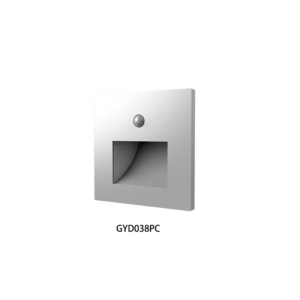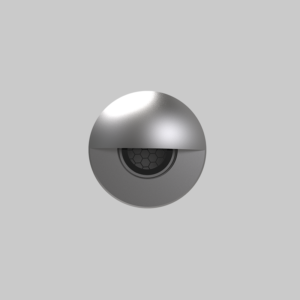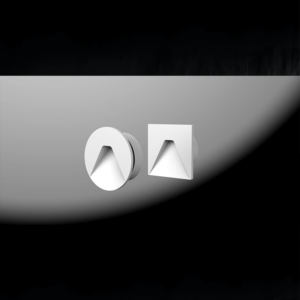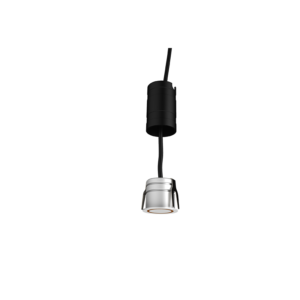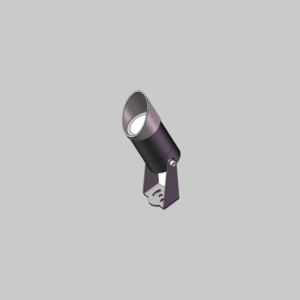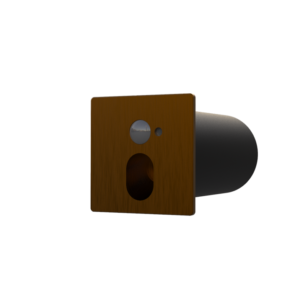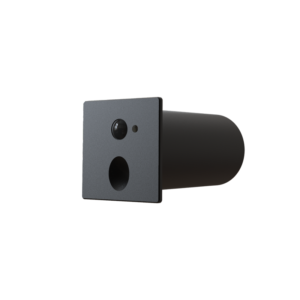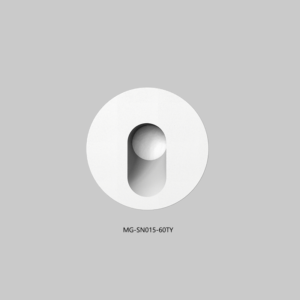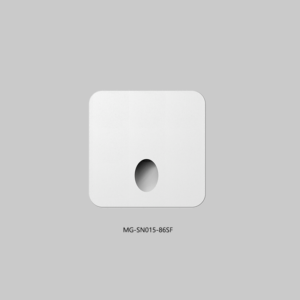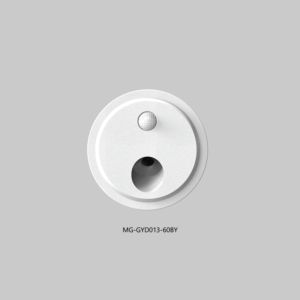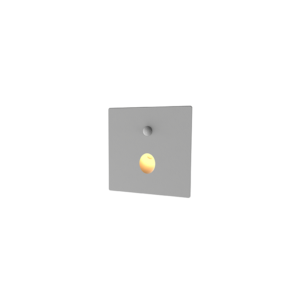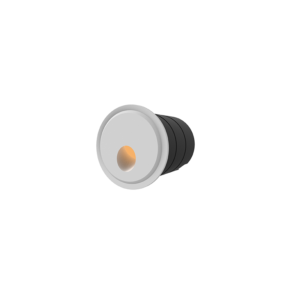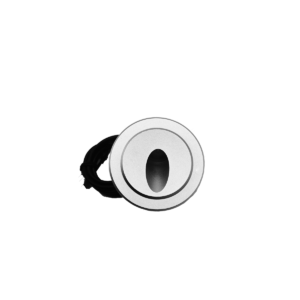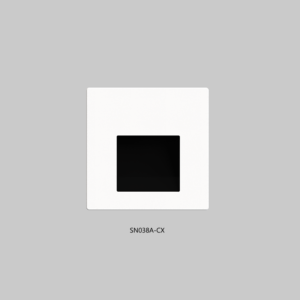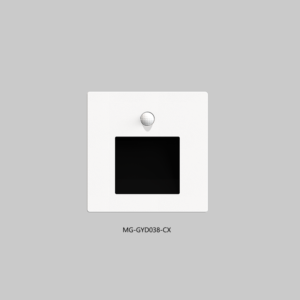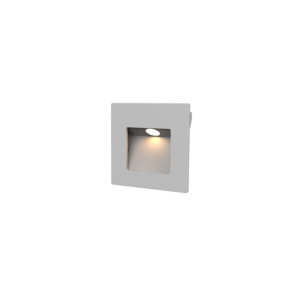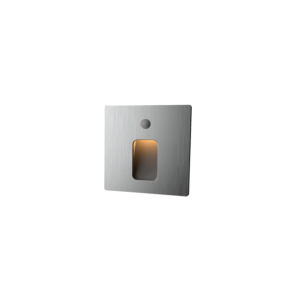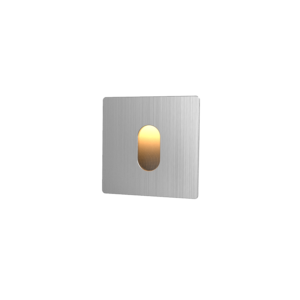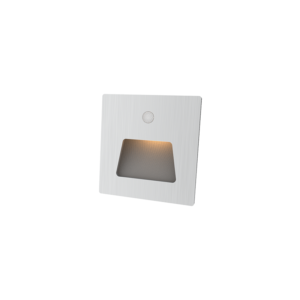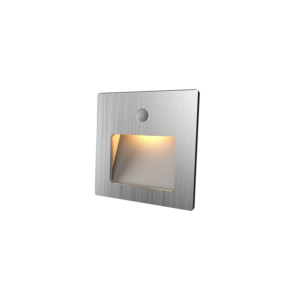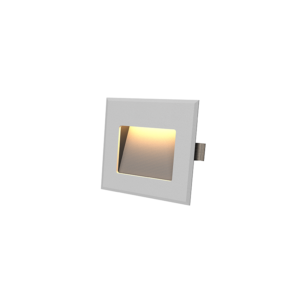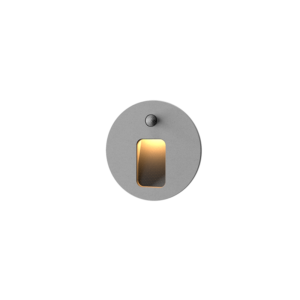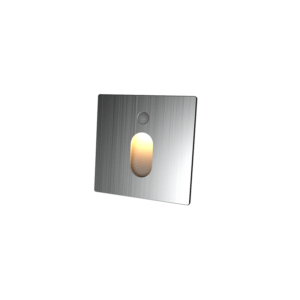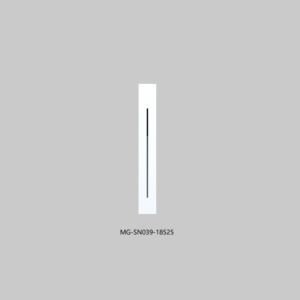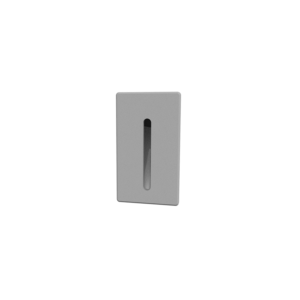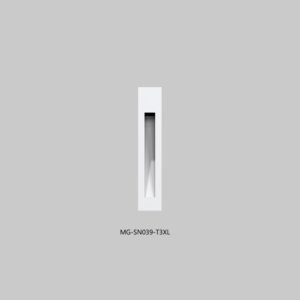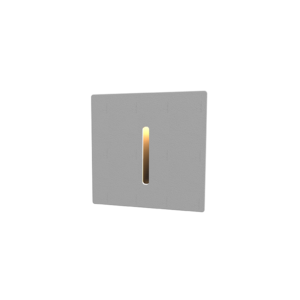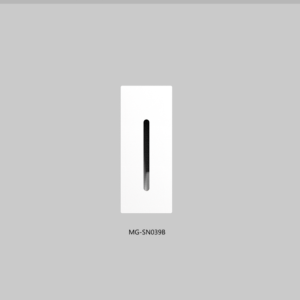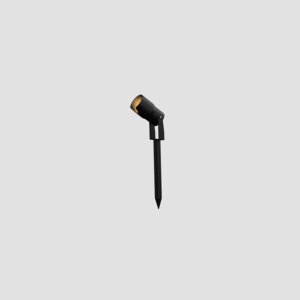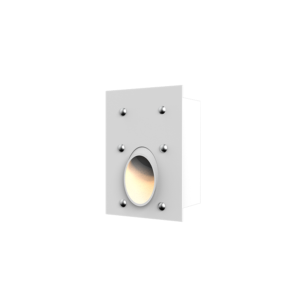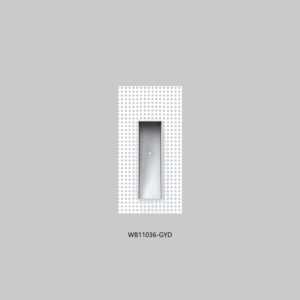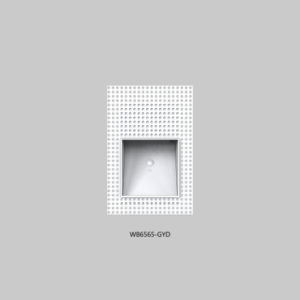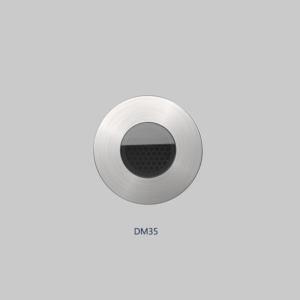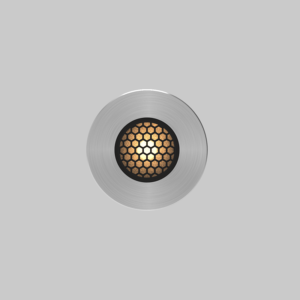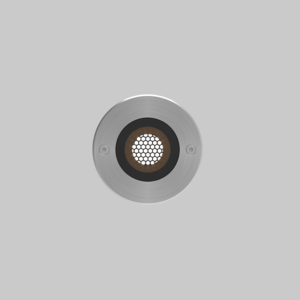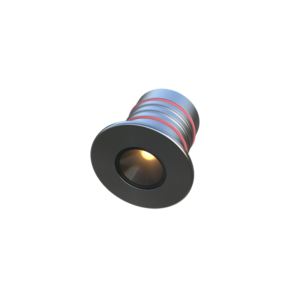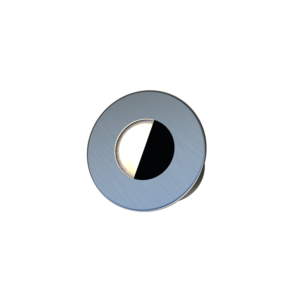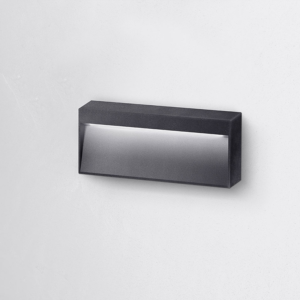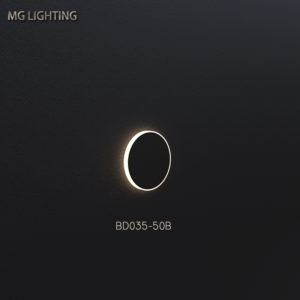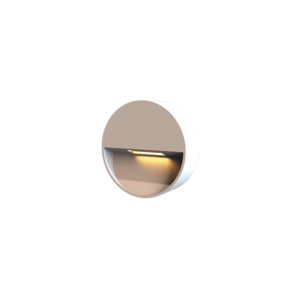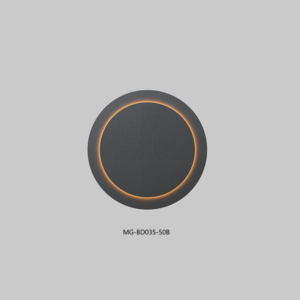Nighttime Safety Lighting: Precise Protection and Humanized Design
Core Objective: Eliminate the visual blind spot of night activities, reduce the risk of accidents, and enhance the safety of residential and commercial spaces through scientific light distribution and intelligent sensing.

1. Corridors and Stairs
Scene Pain Point
Under the low illumination environment, the edges of steps and corners are easy to form visual dead ends, and the elderly and children are easy to trip. Traditional lighting switches are inconveniently located, and it’s easy to feel around at night, which can lead to secondary risks.
Step Light Solution
- Stairway Lighting: Ultra – thin Step Light embedded in the edge of each step (height ≤ 5mm), brightness 10 – 15lx, color temperature 2700K (warm light), to avoid glare.
- Wide – angle Sensing Technology: 120° sensing Step Lights are installed at the corners of stairs, covering multi – directional movement, with response speed ≤ 0.3 seconds.
- Commercial Building Extension: add emergency evacuation guidance function in shopping malls and hotel stairwells, automatically switch to constant red light (brightness ≥ 50lx) when power failure.
Scene Value
When walking at night, the Step Lights automatically light up the path without manual switching, reducing the risk of tripping. In case of emergency, the red light guides rapid evacuation and improves public safety.
2. Bedroom and Bathroom

Scene Pain Points
Strong light stimulation affects sleep when getting up at night, traditional night light needs to be switched manually, which is inconvenient to operate. Slippery ground in the bathroom increases the risk of falling, and it is easy to step on obstacles at night.
Footlights Solution
- Intelligent Path Linkage: bedroom to bathroom path continuous light, brightness ≤ 5lx, color temperature 2700K, and door control switch or human body sensor linkage, open the door that is bright, after a delay of 30 seconds automatically extinguished.
- Anti – skid Guide Design: the bathroom floor adopts high – contrast light strips (such as black tiles with white light strips), width ≥ 50mm, edge chamfering treatment to avoid tripping.
Scene Value
When the elderly and children get up at night, the Step Lights automatically light up the safe path to avoid strong light stimulation. The bathroom light strip clearly identifies the ground contour, reducing the risk of falling in slippery environments.
3. Elderly People’s Room/Children’s Room
Scene Pain Points
Elderly people get up frequently at night, traditional lighting is easy to cause glare or fall. Children’s night activities (e.g. getting up at night, playing) require low – brightness lighting to avoid complete darkness and fear.
Solution for Step Lights
- Brightness: Brightness 1 – 3lx, color temperature 2700K, “breathing light” design (slowly changing light and dark every 10 seconds), simulating the natural sleep environment.
- Impact – resistant Material: the light strip is made of soft silicone material, width ≥ 50mm, anti – treading and soft touch, avoiding damage by children stepping on it by mistake.
Scene Value
Shimmering mode provides a sense of security without affecting sleep quality. Silicone light belt is safe and durable, suitable for children’s activity area.
Atmosphere Creation: Art of Light and Shadow and Spatial Narrative
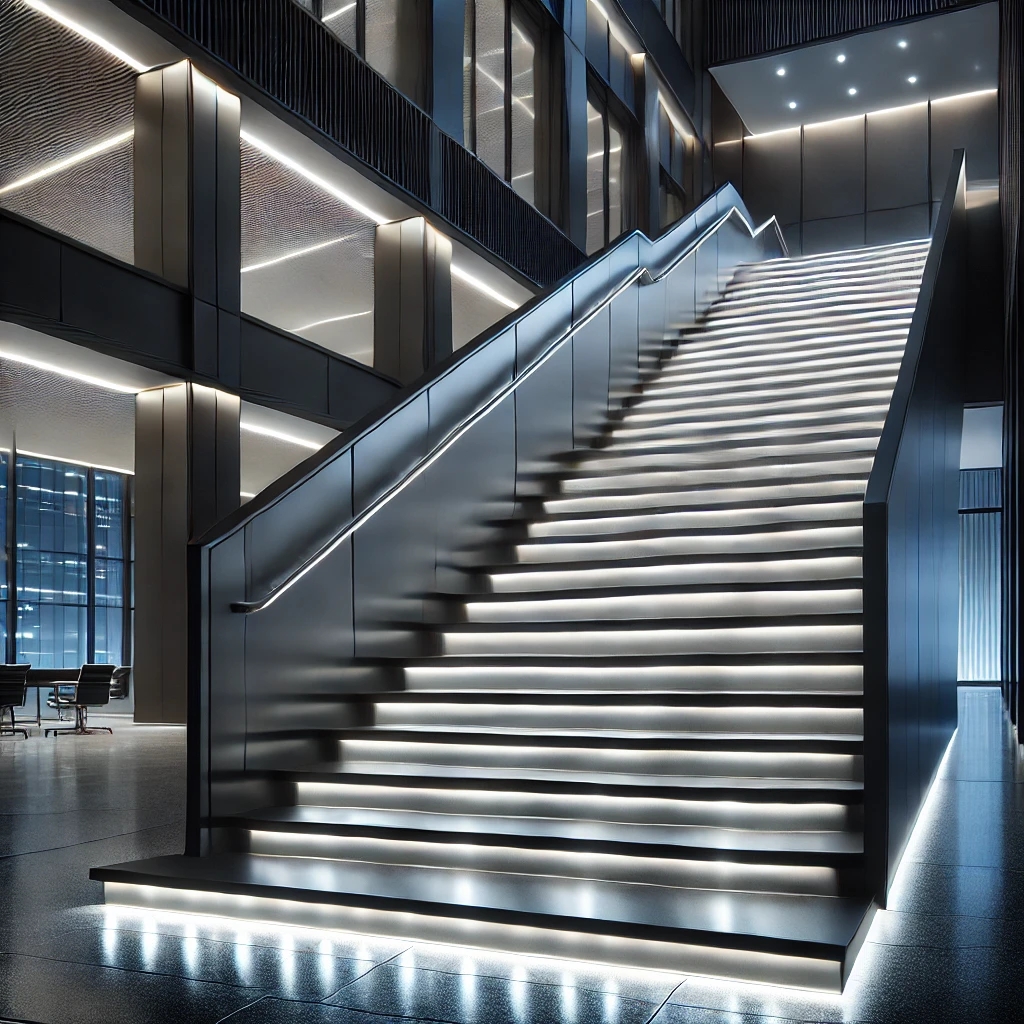
Core Objective: Enhance the emotional value and user experience of the space through dynamic light effects and scenario – based design to meet diversified functional needs.
1. Courtyard and Terrace
Scene Pain Points
Traditional lighting lacks interactivity, making it difficult to match the needs of scenes such as gatherings and meditation. A single color temperature or brightness can not adapt to the atmosphere of different time periods (such as dusk, late at night).
Step Light Solution
- RGB + WW Mixing Technology: support 16 million colors adjustment, color temperature range 2200K – 6500K, brightness 0 – 100% stepless dimming.
- Music Synchronization Mode: connect to the sound system through Bluetooth Mesh protocol, the light changes with the music rhythm (e.g. low frequency band corresponds to red light, high frequency band corresponds to blue light).

Scene Value
Switch to dynamic color light during party to enhance the entertainment atmosphere; switch to warm yellow light during meditation to create a peaceful environment. Music synchronization mode to enhance the immersion of the courtyard activities.
2. Audio – Visual Room
Scene Pain Points
Traditional movie viewing lighting is easy to destroy the sense of immersion, and complete darkness is a security risk (such as tripping, accidentally touching the equipment). A single lighting mode can not meet the movie, games, K songs and other multi – scene needs.
Step Light Solution
- Linear Step Lights + Starry Sky Top Linkage: the ground is embedded with 30mm wide linear light strips, which are synchronized with the starry sky top on the ceiling for gradual change, simulating the cosmic scene.
- Scenario Preset:
- Movie Mode: the brightness of the light strip is reduced to 1%, color temperature 1800K, only the outline of the ground is displayed.
- Game Mode: the light strip changes color with the game screen in real time, enhancing the visual impact.
Scene Value
Provide weak ground guiding light when watching movies to avoid complete darkness; synchronize the light with the screen when playing games to enhance immersion. The starry sky top linkage creates a sci – fi atmosphere and enhances the theme of the space.
Design Principles and Implementation Points

Humanization Principle
- Light Pollution Control: Adopt “indirect light” design (e.g. the light strip is embedded in the groove, and the light is reflected to the ground after striking upwards) to avoid direct shooting to human eyes.
- Barrier – free Adaptation: chamfer radius of the edge of the Step Lights ≥ 3mm, color contrast in accordance with WCAG 2.1 standards (e.g. color difference between the light strip and the ground ≥ 70%).
Technology Integration Principle
- Multi – protocol Compatibility: support Wi – Fi, Bluetooth Mesh, Zigbee and other protocols, compatible with mainstream smart home platforms (e.g. HomeKit, Mijia).
- Energy Consumption Optimization: adopting low – power LED chip + solar energy auxiliary power supply, standby power consumption ≤ 0.1W.
Commercial Building Expansion
- Hotel Scenario: add “Do Not Disturb Mode” for guest room corridor Step Lights, which will be automatically turned off when guests check out.
- Retail Space: window Step Lights adopt “dynamic guide” design to guide customers to high profit areas.
In – depth Analysis of the Application Scenarios of Step Lights in Public Buildings and Infrastructures
(Focus on emergency evacuation guidance and accessibility design)

Emergency Evacuation Guidance: Safety Lifeline
Core Objective: In case of emergency (e.g. fire, power outage), Step Lights can quickly and clearly guide people to evacuate and reduce the risk of casualties.
1. Scene and Pain Points
Shopping Malls, Theaters, Subway Stations, Hospitals:
- Pain Point: In emergencies, traditional lighting fails, personnel easily fall into panic, and the evacuation path is unknown. High – density crowd areas (such as subway stations, hospitals) need to be efficiently guided to avoid trampling accidents.
2. Step Light Solution
Technical Standard
- Comply with IEC 60598 – 2 – 22 emergency lighting standard: ensure the reliability of the lamps in extreme environments.
- Backup power supply lasts ≥ 90 minutes: automatically starts up after power failure and continuously provides lighting.
Scenario Design
Shopping Mall/Theater:
- Path Marking: continuous light distribution along the evacuation channel, brightness ≥ 15lx, color temperature 6500K (cool white light), enhance the sense of direction.
- Dynamic Indication: linked with fire fighting system, automatically switch to flashing red light (frequency 1 – 2Hz) in case of fire, guiding people to move towards the safety exit.
Subway Station:
- Step Edge Lighting:Step Lights embedded in the edge of each step, brightness ≥ 20lx, to avoid tripping during evacuation.
- Exit Marking: additional arrow – shaped Step Lights at platforms and passageway intersections, pointing to the nearest exit.
Hospital:
- Ward Area: Corridor Step Lights adopt “green – yellow – red” three – color zoning instructions (green for the safety zone, yellow for the transition zone, red for the danger zone).
- Operating Room/ICU: Independent power supply for backup power to ensure that the operating lights and Step Lights work synchronously in case of power failure.
3. Technical Details
Intelligent Sensing
The infrared sensor detects the density of human flow and dynamically adjusts the brightness (e.g., the brightness is increased by 30% when human flow is dense).
Impact Resistant Design
The lamp body is made of aviation aluminum with protection level ≥ IP67, which can withstand extreme environments such as stepping and flooding.
Barrier – free Design: Inclusion and Care
Core Objective: To provide a safe and convenient access environment for visually impaired, wheelchair users and other groups through humanized design.
1. Blind Floor Lamp
Scenario Pain Points
Traditional blind alleys rely on tactile cues, which are difficult to recognize at night or in low – light environments. Visually impaired people need additional assistive devices (e.g. cane) to confirm the path.
Footer Lamp Solution
- High – contrast Color: yellow/black color scheme with ≥ 70% contrast ratio, compliant with WCAG 2.1 standard.
- Vibration Feedback Module: built – in piezoelectric sensor, triggers 0.1 second vibration when pedestrians step on it, providing tactile alerts.
- Intelligent Navigation:
- Linkage with cell phone APP, send path information (e.g. “turn left 10 meters ahead”) via Bluetooth beacon.
- The voice prompt light is added at the intersection, when triggered, it will play “Crossroads ahead, please pass carefully”.
2. Wheelchair Ramp Step Lights
Scenario Pain Points
The edge of the ramp is not clear, the wheelchair is easy to deviate from the path. The ground is slippery at night or on rainy days, so extra lighting is needed to ensure safety.
Step Light Solution
- Spacing Control: the distance between the Step Lights ≤ 0.5 meters, brightness ≥ 10lx, color temperature 4000K (neutral white light).
- Non – slip Guide:
- The width of the light strip ≥ 50mm, edge chamfering treatment to avoid tripping.
- Additional “wheelchair symbol” Step Lights are installed at the beginning and end of the ramp to strengthen the visual cues.
- Environmental Adaptation: Automatically increase the brightness to 15lx in rainy and snowy weather, and switch to high – frequency flashing mode (5Hz) to enhance the warning effect.

3. Barrier – free Design for Elevator Halls
Scenario Pain Points
The position of elevator buttons is not easy to identify, and visually impaired people need to feel the operation. Wheelchair users need to clearly determine the opening and closing status of the elevator door.
Solution for Step Lights
- Button Guide:Step Lights are embedded under the elevator buttons, the color corresponds to the buttons (e.g. red for the 1st floor, blue for the 2nd floor), the brightness is 5lx.
- Door Status Indication:
- When the elevator door opens, the Step Light switches to green; when it closes, it switches to red.
- Add a linear light strip at the edge of the door with a width of 10mm to prompt the position of the door slit.
Design Principles and Implementation Points
Compliance
Emergency lighting needs to pass the national fire certification (such as CCC certification), and the barrier – free design complies with the Barrier – Free Design Code (GB 50763).
Reliability
The backup power supply adopts lithium battery + supercapacitor combination to ensure normal operation under extreme temperature (- 20℃ ~ 55℃).
Maintainability
The ground Step Lights support remote monitoring, automatically report to the management platform in case of failure, and the maintenance personnel can locate accurately.
Outdoor Landscape and Guide – Footing Light Scene Details

Scene: Park Trails, Scenic Spots, Parking Lots
Core Function: to realize spatial guidance, state prompts and landscape integration through embedded Step Lights to enhance user experience and safety.
1. Scenic Area Step Lights: Direction Guidance and Atmosphere Creation
Embedded Design
Step Lights are installed flush with the ground to avoid the risk of pedestrians tripping, while maintaining the integrity of the landscape.
Projection Guide Function
- Arrow Projection: using high brightness LED light source, projecting clear arrow symbols on the ground, guiding visitors along the trail or specific routes.
- Text/Icon Tips: Through customized lens or projection diaphragm, it displays the name of attractions, bathroom directions, emergency exits and other signs, supporting multi – language adaptation.
Landscape Integration
The lighting shell is made of stainless steel or stone texture, coordinating with the natural style of the scenic spot; the color temperature can be warm white light (2700K – 3000K) to create a warm atmosphere, or dynamic RGB lighting to enhance the interactivity (such as holiday theme color change).
2. Parking Lot Step Lights: Parking Space Status Visualization
Color Coding System
- Red: Indicates that the parking space is occupied, detecting the presence of vehicles in real time through sensors.
- Green: Indicates that an empty space is available, guiding drivers to quickly find a parking space.

Smart Linkage Technology
Combined with geomagnetic sensor or camera, it realizes automatic switching of parking space status and reduces manual maintenance cost. Support integration with parking management system, synchronize data to mobile APP or navigation screen.
Durable Design
- Pressure – resistant Shell: made of PC or tempered glass to withstand vehicle crushing (e.g. electric car wheel pressure).
- Waterproof and Dustproof: IP68 protection level, adapt to outdoor rain and snow environment.
Energy Saving Optimization
Low power consumption LED light source with light – sensitive control (e.g. auto – light at night). Solar – powered version is optional, reducing wiring costs and energy consumption.
Key Points for Selection and Deployment of Step Lights
Environmental Suitability
1. Humid Environments (e.g. Outdoor Walkways, Underground Garages)
Housing Material
Choose 304 stainless steel shell or anti – corrosion aluminum alloy, the surface is anodized, salt spray corrosion resistance ≥ 1000 hours.
Sealing Design
Silicone sealing ring + waterproof connector to ensure IP68 protection level and prevent water vapor penetration.
Internal Protection
The circuit board is coated with three – proof paint (moisture – proof, mold – proof, salt spray – proof) to prolong the service life.
2. High – temperature Environment (such as Southern Summer Sunny Area, Industrial Workshop)

Heat Dissipation Design
Shell with additional cooling fins or high thermal conductivity aluminum alloy material, with graphene thermal pads to enhance the cooling efficiency.
Internal Layout
LED chip and drive power supply are separated to avoid heat concentration.
High Temperature Resistant Components
Select LED chips with operating temperature range – 40℃ ~ + 85℃, with high temperature resistant electrolytic capacitors (105℃/2000 hours).
Installation Specifications
1. Embedding Depth
Ground Mounting
Embedding depth ≥ 50mm to ensure that the light fixture is flush with the ground to avoid the risk of pedestrians tripping. Substrate treatment: Pre – embedded mounting slots need to be leveled with cement mortar to prevent the fixture from sinking.
Wall Mounting
Embedded depth ≥ 30mm, edge filled with fireproof sealant to prevent smoke penetration (applicable to fire emergency scenarios).
2. Pitch Control
Main Path (e.g. Scenic Walkway, Parking Lot Main Road)
Spacing ≤ 1.5 meters, to ensure continuous and uniform lighting on the ground, to avoid dark areas.
Auxiliary Path (such as Park Trails, Emergency Evacuation Channel)
Spacing ≤ 3 meters, combined with reflective signs to enhance guidance.
Dynamic Adjustment
Fine – tune the spacing according to on – site light simulation results (e.g. DIALux software) to optimize the balance between energy saving and illumination.
Compliance Requirements
1. Emergency Lighting for Fire Fighting
Standard Basis
Comply with “Fire Emergency Lighting and Evacuation Indication System”, with independent emergency power supply (battery life ≥ 90 minutes).

Functional Requirements
Automatically switch to emergency mode after mains power failure, minimum illumination on the ground ≥ 1lx (continuous type luminaire) or ≥ 5lx (non – continuous type luminaire). Emergency status indicator: green constant light (main power working), red flashing (emergency mode).
2. Barrier – free Design
Standard Basis
Satisfy GB 50763 – 2012 “Barrier Free Design Code” to ensure safe passage for visually impaired people.
Design Requirements
- Color Contrast: color difference between the light strip and the ground ≥ 70% (according to WCAG 2.1 standard).
- Tactile Tip: The surface of the Step Lights of the blind road is equipped with bump arrays with a diameter of ≥ 5mm and a spacing of ≤ 15mm.
- Sound and Light Linkage: intersection Step Lights can be equipped with a buzzer (volume ≤ 65dB) to synchronize the prompt change of direction.
Selection and Deployment Optimization Suggestions
Scenario – based Selection
- Parking Lot: Priority is given to pressure – resistant PC material + solar power supply, adapting to the needs of vehicle crushing and low energy consumption.
- Hotel Corridor: choose low brightness (≤ 50lm) warm light Step Lights to avoid interfering with guests’ rest.
Pre – commissioning and Acceptance
Waterproof test (48 hours of immersion) and light uniformity test (illuminance meter measurement error ≤ 10%) before installation. Check emergency switching time (≤ 5 seconds) and battery health (capacity ≥ 80% of nominal value) during acceptance.
Maintenance Convenience
Adopt modularized design, support quick replacement of light strip, battery and sensor. Reserved access port (size ≥ 300mm × 300mm), convenient for later maintenance.



